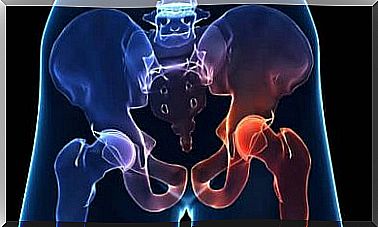Urine Culture: What Is It And What Is It Used For?

Urinary tract infections are very common. Scientific studies estimate that between 50% and 60% of women will suffer from it at least once during their lifetime. Many germs can cause this problem. Fortunately, a urine culture can detect the exact causative agent.
In 1995, the direct and indirect costs of UTIs in the United States were estimated at $1.6 billion. It is, of course, essential to know how to identify the pathogen that caused the infection, as this allows the patient to recover quickly.
What is a urine culture used for?
First, we must emphasize that a urine culture and a urine test are not the same. The latter is an umbrella term and consists of a series of tests including:
- macroscopic and microscopic tests
- physico-chemical tests
- if necessary, a urine culture
A urine culture is therefore not always necessary for diagnostic purposes. According to the United States National Library of Medicine , doctors consider this investigation when they suspect a UTI in adults and children.
How is the sample taken?
Usually the patient takes the urine sample at home and then takes it to the hospital or general practice. The Chilean Society of Infectious Diseases’ clinical microbiology committee has documented each of the steps in a scientific paper (Spanish link).
How do you take a urine sample?

This is a critical stage in the urine collection process, as the fluid can become contaminated with bacteria that reside on the skin or in the patient’s genitourinary tracts. According to the American Society for Microbiology , any sample that is less than 5% contaminated is considered suitable.
There are different types of urine samples, but we are going to focus on the most common. This is when the patient urinates into a container at home and then takes the sample to a health center. With this procedure you should take the following guidelines into account:
- Collect your first morning urine in a clean container, as it is the most concentrated.
- Do not drink too much the night before you collect the sample, as this will dilute the urine.
- Experts recommend collecting 25 to 50 milliliters. A urine culture requires at least three milliliters of urine.
According to the journal Annals of Pediatrics , the sample can also be obtained using other techniques, such as suprapubic aspiration or urinary bladder catheterization.
Although the techniques have less chance of contamination than peeing in a bowl, they are also much more invasive procedures that should only be chosen in exceptional cases. Think, for example, of people who are unable to take a sample themselves due to illness.
What will happen to the sample?
According to the medical literature mentioned above, various analyzes can be performed on a urine culture. The most common examination is bacterial growth. The way this is done is as follows:
- Using a special object, the lab technician spreads the urine sample on a medium that is conducive to bacterial growth. This medium usually consists of a mixture of agar in a petri dish.
- The technician then leaves the sample in a closed room at 35-37 °C for 16 or 18 hours.
- The lab technician then counts the number of bacterial colonies growing on the Petri dish.
The premise here is very simple. If bacteria are present in the patient’s urine, they will multiply in the petri dish. This way they know whether the patient has an infection or not.
With further testing, they can determine the exact agent causing the infection. With this information, the doctor can then determine and prescribe the best treatment.
Symptoms of a urinary tract infection
It can be difficult to know if you need a urine culture to determine what’s going on and resolve your discomfort. According to the Mayo Clinic, the most common symptoms of a urinary tract infection include:
- A strong, persistent urge to urinate.
- A burning sensation when urinating.
- Urine that appears red, bright pink, or brown. This is a sign of blood in the urine.
- Pelvic pain in women. This pain is mainly located in the middle of the pelvis and around the pubic bone area.
The symptoms will vary depending on which part of the genitourinary system is infected and where the bacterial colonies are located. However, fever and abdominal discomfort are the symptoms that are very common.
The results of a urine culture

The results of the test are not difficult to interpret. Normal values imply that everything is fine, which can rule out a bacterial infection in the patient. On the other hand, a positive test result implies the presence of bacteria or fungi in any part of the urinary tract.
In these situations, the doctor in charge of your treatment will prescribe the appropriate antibiotic or antifungal. Remember to strictly follow your doctor’s recommendations, as stopping treatment early can lead to complications.
Urine Culture During Pregnancy: Is It Important?
According to the website of the non-profit organization Inatal (Spanish link), a urine culture during pregnancy is very important. Pregnant women are more prone to bacterial infections because of the physiological changes that occur during pregnancy.
In addition, many cases of urinary tract infection are asymptomatic. Even if a urinary tract infection does not cause clinical symptoms in the mother, it can lead to unwanted complications, such as an increased risk of preterm labor.
The importance of urine cultures
As you will have understood by now, urine cultures are an important part of a urine test if the doctor suspects in a patient. This simple laboratory technique allows lab technicians to isolate and identify the pathogen in a patient.
Most people can easily collect the sample at home. However, in some exceptional cases suprapubic aspiration or a urinary catheter may be required.
A negative urine culture indicates the absence of bacteria in the genitourinary tract, while a positive culture requires the use of antibiotics or antifungals.









